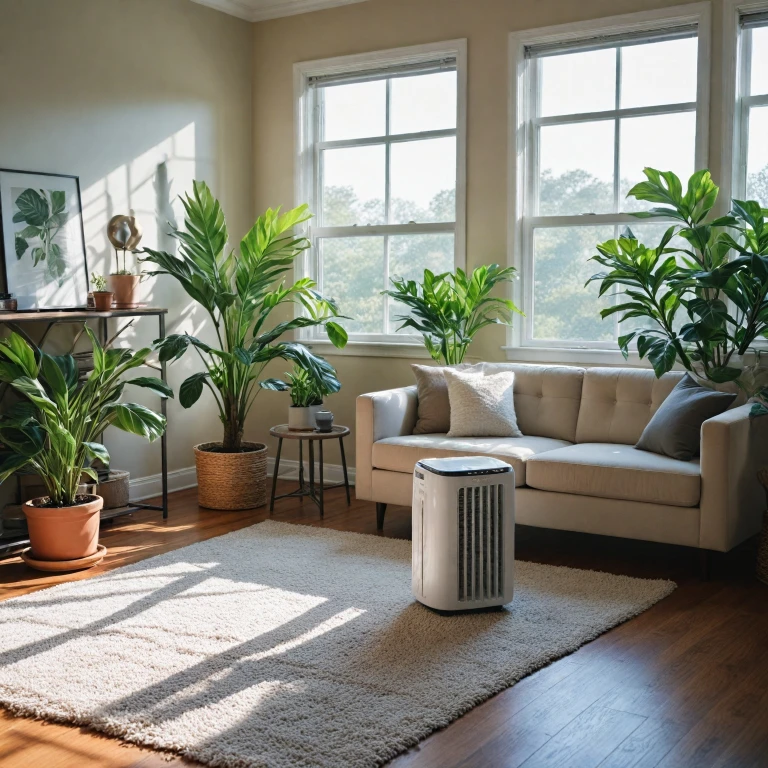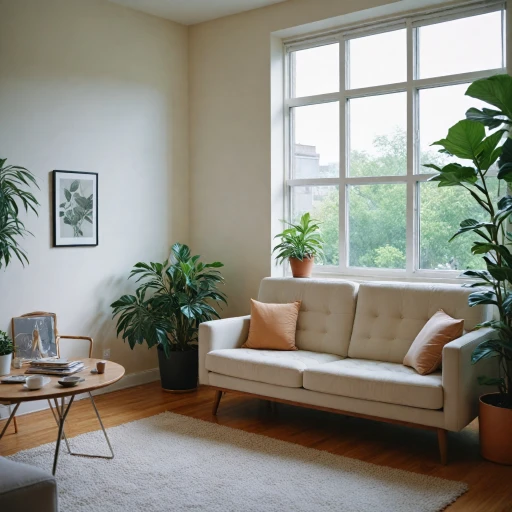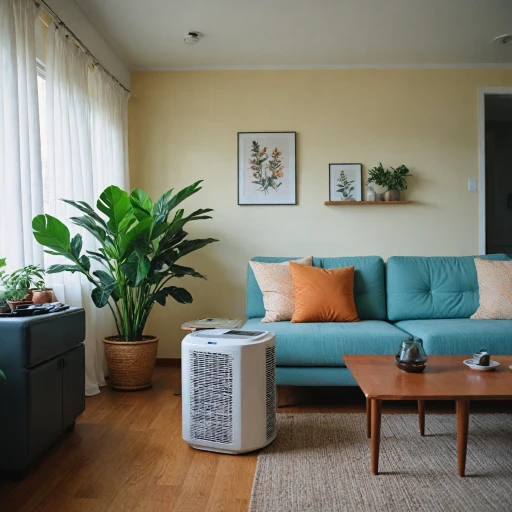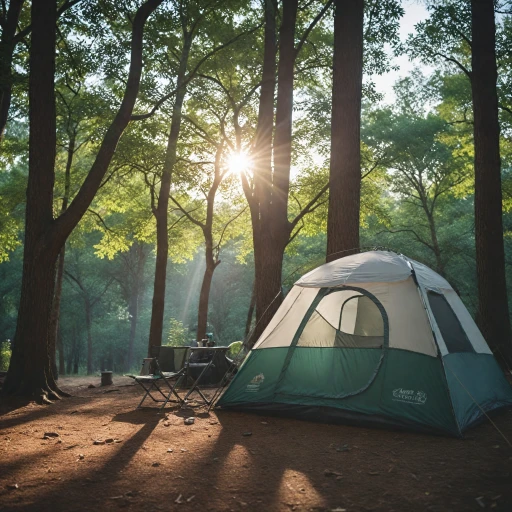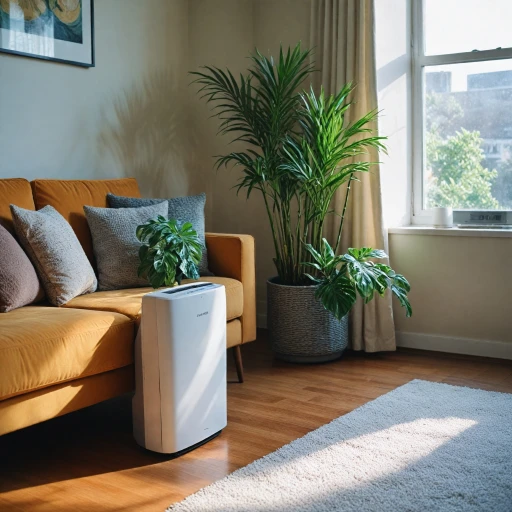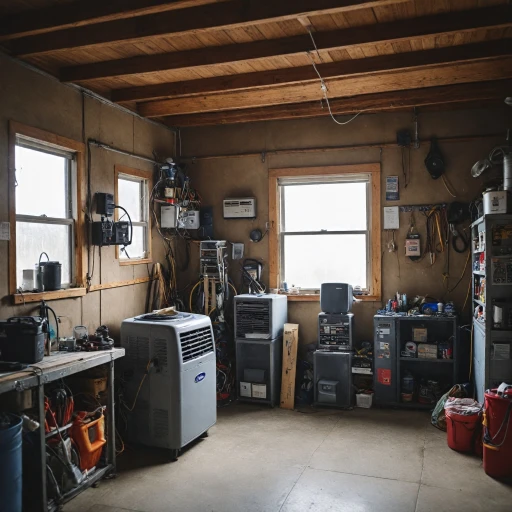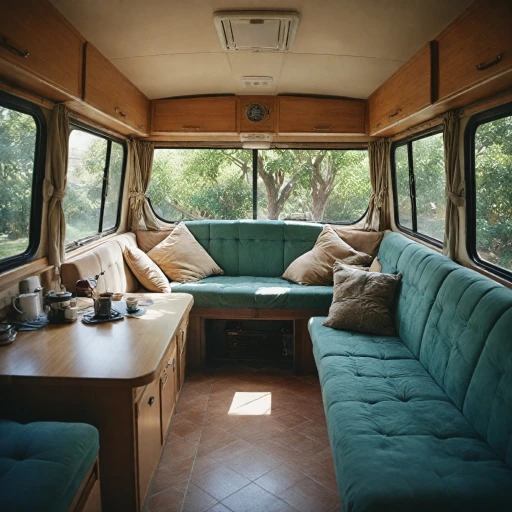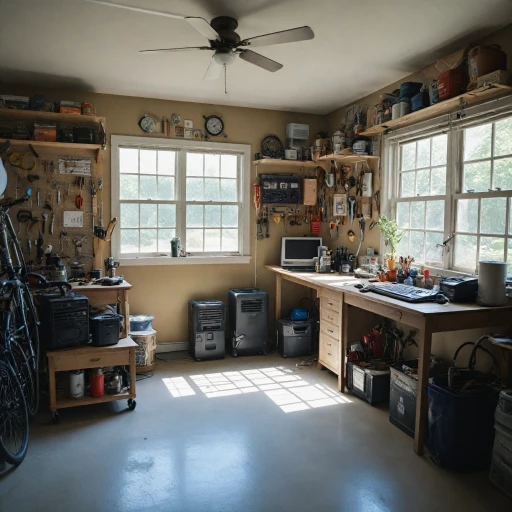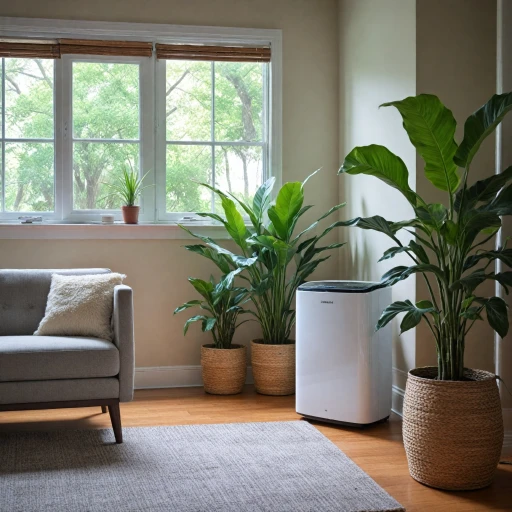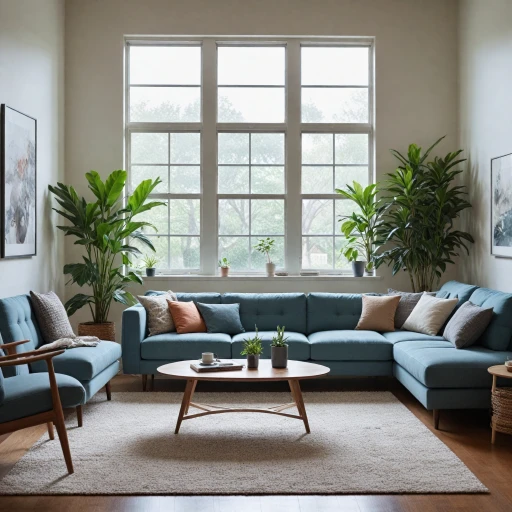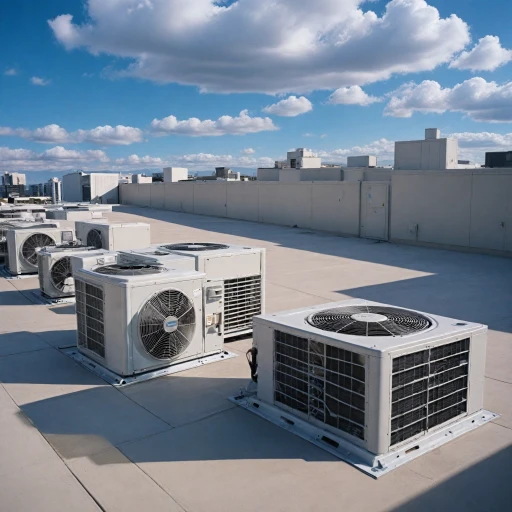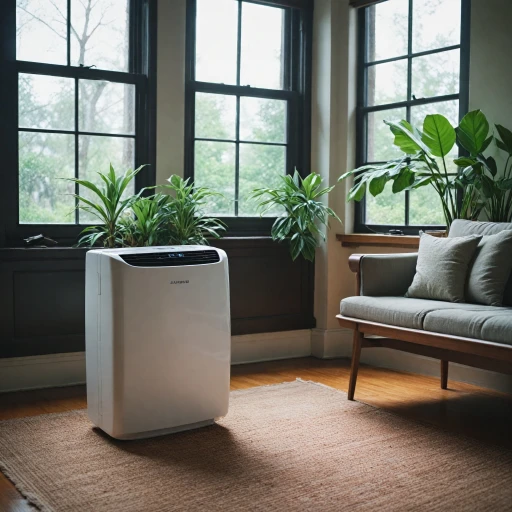
Understanding Evaporative Portable Air Conditioners
Demystifying Evaporative Coolers
Evaporative portable air conditioners, often referred to as swamp coolers, are a refreshing alternative to traditional air conditioning units, especially in dry climates. At their core, these portable systems operate based on the same principle as nature's own cooling method—evaporation. Instead of relying on complex refrigeration cycles, evaporative air coolers draw warm air into the unit using a fan. This air then passes through water-saturated pads where the evaporation process occurs. As the water turns into vapor, it absorbs heat from the incoming air, resulting in cooler temperatures as delightful breezes of cooled air waft into your room. The key to their effectiveness lies in their simplicity and the regions in which they are used. In environments where humidity is low, like certain parts of the United States, evaporative cooling can be especially efficient. With a portable design, these coolers are perfect for renters or anyone seeking cooling air without permanent installations. All you need to do is fill the water tank, and it's ready to cool. For those considering an evaporative cooling option, it's important to understand these are not one-size-fits-all solutions. Factors such as unit size, cooler CFM (cubic feet per minute), and room dimensions will affect performance. It's advisable to check product specifications carefully when choosing your cooling unit. For further tailored guidance on selecting the right portable unit for your needs, our detailed guide on choosing the right portable air conditioner can provide valuable insights. In summary, while the concept of evaporative cooling might seem like a method from long ago, it remains a viable and often economical solution for cooling spaces with dry air, combining cost-effective air conditioning with natural moisture air processes.Advantages of Evaporative Portable Air Conditioners
Why Opt for Evaporative Cooling Systems
Evaporative air coolers, often referred to as swamp coolers, offer unique advantages over traditional air conditioning units. Unlike traditional air conditioners that rely on refrigeration, evaporative coolers use the natural process of evaporation to cool air. This makes them energy-efficient and cost-effective, particularly in dry climates. They work by drawing warm air through water-saturated pads, which then causes the water to evaporate and cools the air. This cool air is then circulated throughout the room using a fan. Evaporative coolers are known for their simplicity in design and function. Here are some reasons why an evaporative air cooler might be the right choice for you:- Energy Efficiency: One of the main benefits of evaporative air conditioning is its energy efficiency. These systems use less electricity compared to traditional air conditioners, reducing the overall energy consumption.
- Cost-Effective: With lower energy usage, evaporative air coolers result in reduced utility bills, making them a budget-friendly option for those looking to cool their space economically.
- Eco-Friendly: Swamp coolers do not use chemicals like CFCs or HCFCs, which are common in conventional air conditioners and contribute to greenhouse gas emissions. The use of water as a cooling medium makes it an environmentally conscious choice.
- Added Humidity: These coolers increase the moisture level in the air, which can be beneficial in arid environments. This added humidity can make the room feel more comfortable and help prevent skin dryness and respiratory issues associated with dry air.
- Simple Installation and Maintenance: Portable evaporative units are generally easier to install and maintain. They are designed to be easily moved from one room to another and do not require complex installation procedures.
Challenges and Limitations
Understanding the Hurdles of Evaporative Coolers
When considering a portable evaporative air conditioner, it's essential to recognize the challenges associated with these units. While they offer numerous advantages, including cost-effectiveness and energy efficiency, they also come with specific limitations. Firstly, evaporative coolers rely on the process of evaporation to cool air, meaning that their performance is significantly influenced by the ambient humidity levels. In areas with high humidity, the cooling effectiveness of these units drops dramatically because the air is already saturated with moisture. This feature contrasts with traditional air conditioners, which can operate independently of humidity levels. Another consideration is the need for a continuous water supply. Evaporative coolers function by drawing air over water-saturated pads, requiring you to frequently fill the water tank depending on usage. This might be less convenient compared to traditional air conditioners that operate without additional manual input. Portability can also be a double-edged sword. While these units are easy to relocate from room to room, they might not cool as effectively in larger spaces or rooms with poor air circulation. This limitation is more pronounced if the chosen unit lacks sufficient cooler CFM (cubic feet per minute) output to handle the room size effectively. Those seeking to maintain optimal cooling in a garage or larger area might want to explore alternative cooling solutions that fit their specific needs. Price is another factor to weigh. Although evaporative coolers generally have a lower initial price compared to traditional air conditioning units, potential buyers should evaluate long-term costs, including water consumption and the need to occasionally replace cooling pads. In addition to these practical considerations, users should be aware of the maintenance required to keep evaporative air coolers in peak condition. Regular cleaning of the unit, checking for mold or mineral build-up, and ensuring optimal water levels are crucial to maintaining efficiency. Lastly, it's important to note that while modern evaporative coolers, like those from manufacturers such as Honeywell, come equipped with conveniences like remote controls, they still may not provide the precise climate control offered by traditional air conditioning systems. By understanding these limitations, consumers can make informed decisions about whether a portable evaporative air conditioner is the right choice for their specific circumstances, weighing the pros and cons against their individual cooling needs.Choosing the Right Model for Your Needs
Factors to Consider for Your Ideal Air Cooler
Choosing the right evaporative portable air conditioner involves weighing various factors to ensure it perfectly meets your cooling needs. While evaporative coolers offer a fresh way to cool your room by harnessing the power of water and air, selecting the best unit requires careful consideration.
- Room Size Compatibility: Check the cooler’s CFM (cubic feet per minute) rating. It's crucial as it determines the area the unit can effectively cool. Larger rooms require more CFM for sufficient cooling air distribution.
- Water Tank Capacity: A larger water tank will reduce the frequency of refills, offering convenience especially in hot climates. Assess how often you're willing to refill to avoid interrupting your cooling experience.
- Product Features: Consider additional features like remote control operation, timer settings, and variable fan speeds. Brands like Honeywell offer models with advanced features that enhance usability.
- Portability: Lightweight and maneuverable coolers facilitate flexible positioning and are ideal for users who wish to move the unit between rooms or spaces, especially common in portable evaporative cooling solutions.
- Climate Suitability: Since evaporative air coolers work best in dry environments, ensure your local climate is suitable for this type of air conditioning. In humid areas, the added moisture might be less effective.
- Budget: Assess your financial constraints to find a unit that offers value for money. Although prices can vary, it's essential to balance affordability with performance to meet your evaporative cooling expectations.
Considering these aspects will answer your question on which unit will meet your needs effectively. With the right choice, you can enjoy cool air efficiently without the hefty price of traditional air conditioners.
Maintenance Tips for Optimal Performance
Maintaining Your Portable Evaporative Air Conditioner for Optimal Cooling
Keeping your portable evaporative air conditioner in prime condition is crucial for ensuring its efficiency and longevity. Regular maintenance not only helps preserve the unit’s cooling capabilities but also boosts the air quality in your room. Here’s a guide on how to maintain your swamp cooler effectively.
1. Regular Water Tank Checks: The water tank is a critical component of your portable evaporative cooler. It's essential to ensure that it is filled to the recommended level to maintain optimal cooling. Frequent checks enable you to refill the tank in a timely manner, thus preventing any interruptions in air cooling.
2. Clean the Cooling Pads: Over time, dirt and minerals can accumulate on the cooling pads. This accumulation can hinder effective moisture air delivery and degrade your unit’s performance. Cleaning these pads regularly will ensure that the cooler effectively utilizes water for evaporative cooling.
3. Monitor the Fan and Airflow: Ensure the fan is functioning correctly as it plays a key role in distributing cool air. Any obstruction in the airflow path can lead to reduced cooling efficiency. Ensure the vents are not blocked and clean them periodically to maintain optimal airflow.
4. Use in Appropriate Conditions: Evaporative air coolers perform best in areas with low humidity. If you are in a region with more moisture in the air, consider the limitations discussed previously. Be mindful of weather conditions for improved operation.
5. Invest in a Quality Model: If you're in the market for a new model, prioritizing a reputable brand known for long-lasting products, like Honeywell, can help reduce the frequency and cost of maintenance. This ties into selecting the right unit for your needs, where price and cooler CFM (Cubic Feet per Minute) can be telling factors.
6. Utilize Remote Controls: Many modern portable evaporative units come with remote control capabilities. This feature not only provides convenience but also allows you to adjust settings optimally without manually interacting with the device.
By following these maintenance steps, you're not just ensuring the longevity of your evaporative cooler but also maximizing the cooling air efficiency it offers. Keep in mind the importance of addressing the challenges and limitations of these units as part of a holistic approach to maintaining an effective air cooling system.
Comparing Evaporative Portable to Traditional Air Conditioning
Evaluating Traditional and Evaporative Cooling Systems
Finding the right type of air cooling system involves understanding how traditional air conditioning and evaporative coolers differ in their operation, efficiency, and suitability for various climates. Traditional air conditioners, often central systems or portable units, operate by using refrigerants to cool the air. This process is energy-intensive and can lead to higher electricity bills. In contrast, evaporative air coolers utilize water evaporation to reduce the air temperature, making them more energy-efficient, especially in hot, dry climates prevalent in certain areas of the United States. Swamp coolers, another name for evaporative coolers, work by drawing hot air through water-saturated pads, adding moisture to the air and thus cooling it. Here are some key considerations:- Efficiency and Cost: Evaporative air coolers generally consume less electricity than air conditioning units, which can translate into reduced operational costs. The initial price of portable evaporative coolers might be lower than traditional systems, but the cost can vary based on the model and brand, like a Honeywell cooler.
- Climate Suitability: Air conditioners are versatile and effective in a variety of climates, but evaporative coolers are best suited for arid environments, where adding moisture to the air enhances comfort. In humid areas, an evaporative cooler may struggle to achieve the desired cooling.
- Portability and Space: Portable evaporative coolers, like the units often used in garages, offer flexibility in placement and can be moved easily from one room to another. Their water tanks need filling periodically, contributing to their portability. Traditional portable air conditioning, although also movable, may require window or vent access to expel hot air.
- Air Quality and Humidity: Evaporative coolers can increase indoor humidity, which might be beneficial or undesirable depending on the existing moisture levels. They offer fresh, cool air by circulating the outside air, while traditional air conditioners tend to recirculate the same indoor air, affecting its quality over time.
